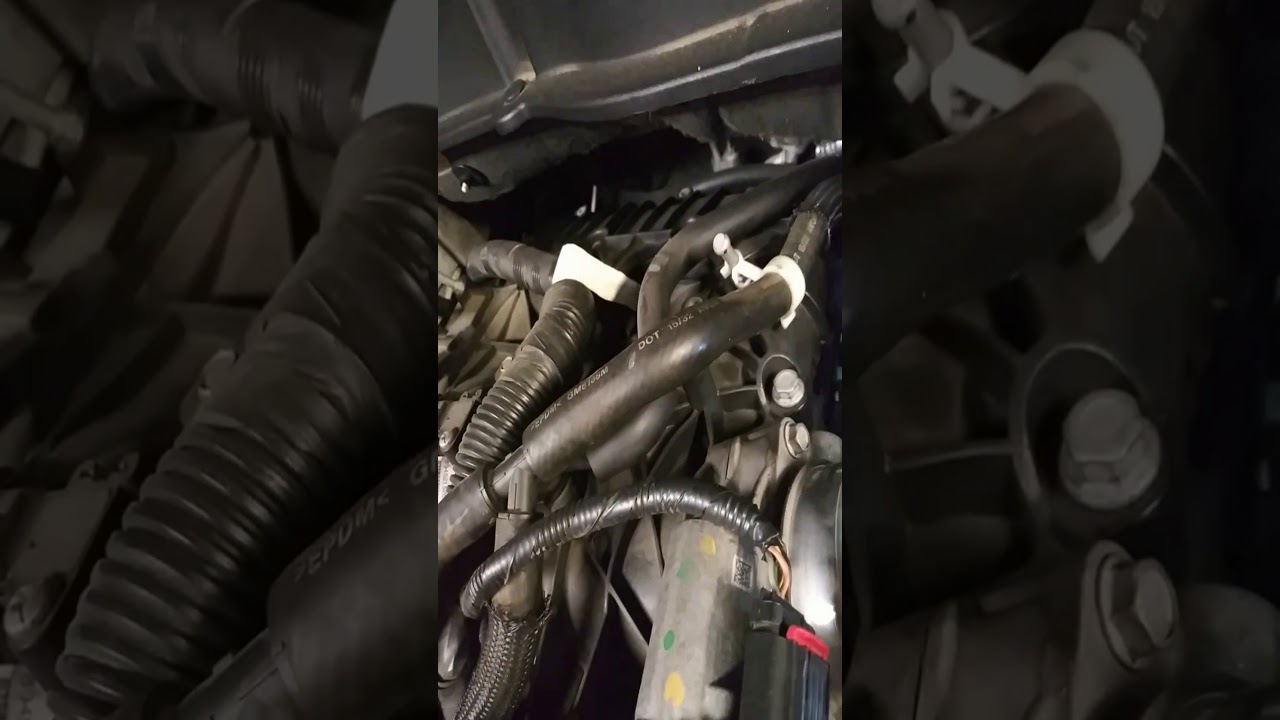2012 Buick Enclave Fuel Pressure Regulator

The 2012 Buick Enclave, a popular choice for families and those seeking a comfortable ride, relies on a sophisticated fuel system to deliver optimal performance and fuel efficiency. While the Enclave doesn't utilize a traditional, mechanically-regulated fuel pressure regulator mounted on the fuel rail in the same way older vehicles did, understanding how the fuel system maintains proper fuel pressure is crucial for diagnostics and repair. This article delves into the fuel pressure regulation system of the 2012 Buick Enclave, focusing on its components and operational principles.
Fuel System Overview: Returnless System
The 2012 Enclave employs a returnless fuel system. Unlike older return-style systems that continuously circulate fuel from the tank to the engine and back, a returnless system delivers fuel to the engine only as needed. This design minimizes fuel heating and vapor lock, improving efficiency and reducing emissions. A key component of this system is the fuel pump module (FPM), which is located inside the fuel tank.
The fuel pump module integrates several critical components, including the fuel pump itself, a fuel level sensor, and an electronic fuel pressure regulator. This integrated design is a common feature in modern vehicles.
The Role of the Fuel Pump Module
The fuel pump, driven by an electric motor, draws fuel from the tank and delivers it to the fuel injectors. The fuel pump module is controlled by the Engine Control Module (ECM), also referred to as the Powertrain Control Module (PCM). The ECM monitors various engine parameters, such as engine speed (RPM), engine load, and throttle position, to determine the optimal fuel delivery rate.
Instead of a traditional regulator that mechanically bleeds off excess pressure, the ECM controls the fuel pump speed and output to precisely match the engine's fuel demand. This is achieved by sending a variable voltage signal to the fuel pump module. Increasing the voltage increases the pump speed, and decreasing the voltage reduces the pump speed.
Fuel Pressure Sensor and ECM Feedback
A fuel pressure sensor, typically located on the fuel rail, provides feedback to the ECM regarding the actual fuel pressure in the system. This sensor transmits a signal proportional to the fuel pressure, allowing the ECM to make real-time adjustments to the fuel pump speed. This closed-loop control ensures that the fuel pressure remains within the specified range, typically around 50-60 PSI (pounds per square inch), depending on operating conditions.
For example, during acceleration, the ECM will increase the fuel pump speed to deliver more fuel and maintain the correct air-fuel ratio. Conversely, during idle or deceleration, the fuel pump speed will be reduced to prevent over-fueling.
Diagnosing Fuel Pressure Issues
Because the fuel pressure regulation is managed electronically, diagnosing fuel pressure problems in a 2012 Buick Enclave requires a slightly different approach than with older vehicles. Here are some common symptoms of fuel pressure issues:
- Difficulty starting the engine
- Rough idle
- Hesitation during acceleration
- Poor fuel economy
- Engine stalling
- Check Engine Light (CEL) with codes related to fuel trim or fuel pressure
When diagnosing these issues, it's crucial to use a scan tool to read any Diagnostic Trouble Codes (DTCs) stored in the ECM. These codes can provide valuable clues about the source of the problem. Additionally, a fuel pressure gauge can be connected to the fuel rail to verify the actual fuel pressure. Comparing the actual fuel pressure to the desired fuel pressure (as reported by the scan tool) can help pinpoint whether the issue lies with the fuel pump module, the fuel pressure sensor, the wiring, or the ECM itself.
Troubleshooting and Repair
If the fuel pressure is consistently too low, the fuel pump module may be failing and need replacement. A faulty fuel pressure sensor can also cause incorrect readings, leading to incorrect fuel delivery. Wiring issues, such as corroded connectors or damaged wires, can also disrupt the communication between the ECM and the fuel system components.
Remember to always consult the factory service manual for specific diagnostic procedures and repair instructions for the 2012 Buick Enclave. Replacing the fuel pump module typically requires removing the fuel tank, so it's essential to follow proper safety precautions, including disconnecting the battery and relieving fuel system pressure.
In conclusion, the 2012 Buick Enclave's returnless fuel system relies on an electronically controlled fuel pump module and a fuel pressure sensor to maintain optimal fuel pressure. Understanding the components and operational principles of this system is essential for accurate diagnostics and effective repairs.
